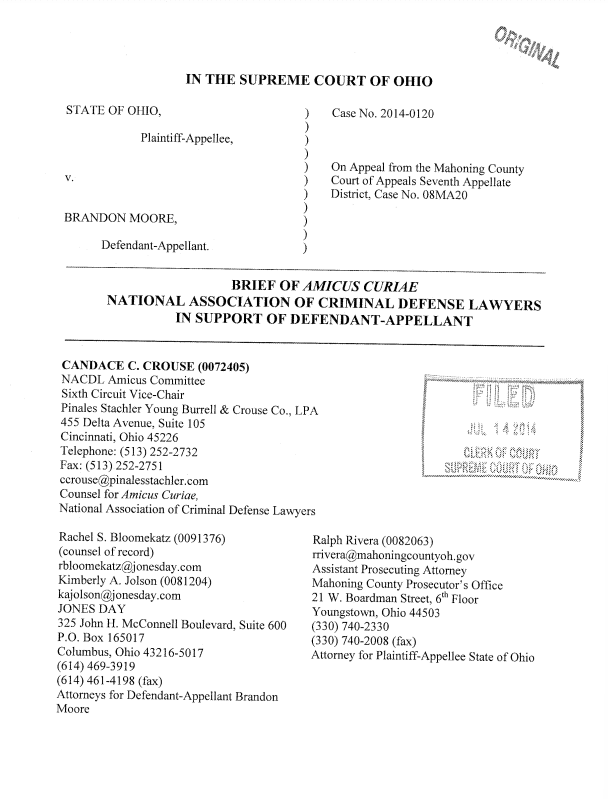
Summary of Argument
The United States Supreme Court has repeatedly held that children are categorically different from adults for purposes of criminal sentencing, and this Court has recently stressed that "youth and its attendant circumstances are strong mitigating factors." Ohio v. Long, 138 Ohio St. 3d 478, 487 (2014). Consequently, because a "juvenile offender who did not kill or intend to kill has a twice diminished moral culpability, ... the Eighth Amendment prohibits the imposition of a life-without-parole sentence on a juvenile for a nonhomicide offense." Id. at 481 (quoting Graham v. Florida, 560 U.S. 48, 59 (2010)).
These essential constitutional and human realities—namely, that juveniles who commit criminal offenses are not as culpable for their acts as adults are and are more amenable to reform, Long, 138 Ohio St. 3d at 488—preclude functional as well as formal life-without-parole sentences for juveniles convicted only of nonhomicide offenses. Because the U.S. Constitution requires that every Ohio juvenile nonhomicide offender be afforded "some meaningful opportunity to obtain release based on demonstrated maturity and rehabilitation," Graham, 560 U.S. at 75 (emphasis added), this Court must invalidate any sentence like Brandon Moore's that amounts to a de facto life sentence due to its length and the complete lack of any parole eligibility until many decades after his reasonable life expectancy.
Though the U.S. Supreme Court has not yet addressed just how long a juvenile's term-of-years sentence must be to be unconstitutional, courts have recognized that extreme term-of-year sentences like the one imposed on Brandon Moore cannot be used to circumvent the limits of the Eighth Amendment. See, e.g., California v. Caballero, 55 Cal. 4th 262 (2012); Iowa v. Ragland, 836 N.W.2d 107 (Iowa 2013). In addition, amicus curiae NACDL suggests that this Court consider utilizing this case to give the Ohio Constitution distinctive force and meaning by providing Ohio courts and litigants guidance pursuant to Article I, Section 9 concerning just how "courts must treat youths who commit murders and other serious crimes differently from adults who commit those same crimes." Long, 138 Ohio St. 3d at 488 (O'Connor, C.J., concurring) (emphasis added).